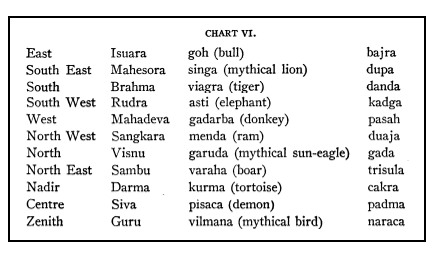This week, as last week, in my pursuit of new biomedical words that have appeared in the last 50 years, I am investigating words first listed in the Oxford English Dictionary (OED) over a four-year period, this time from 1996 to 1999 inclusive (Table 1).

Sildenafil was discovered in 1995, patented in 1996, and marketed as Viagra. The origin of the brand name is not known, but the Sanskrit word for a tiger was viagra (Box 1). The OED discounts this as a possible influence, but I like to think that tigerish symbolism might be relevant. Modern languages in the Indo-Aryan group have similar words for a tiger: bagh in Assamese, Bangla, Hindi, and Odia; vagh in Gujarati; and wagh in Marathi.

I have previously dealt with photophoresis when discussing photopheresis, which first appeared in 1984. “Photopheresis” comes from the Greek verb ἀϕαιρεῖν (aphairein), to take away or remove, giving the English noun aphaeresis. In extracorporeal photopheresis whole blood is removed from the body and the buffy coat is separated and exposed to 8-methoxypsoralen (methoxsalen), which is inert. The methoxsalen is taken up by cells and activated by exposure to UV A. It binds with high affinity to DNA and other cellular constituents, particularly in lymphoid cells, leading to apoptosis and other effects. The blood is then returned to the body. The many outcomes of this procedure include macrophage activation and changes in cytokine production. “Photophoresis” has been used to describe the same process, but comes from a different Greek verb, ϕορεῖν (phorein), to carry. However, photophoresis has another meaning, light-induced movement of small particles, which dates from 1991. Not surprisingly the two words have sometimes been confused.
Six words in the list end in –ome, –omic, or –omics. To trace the origin of these we need to go back to 1920 and the invention of the word “genome” by Hans Karl Albert Winkler (1877–1945), a German botanist. In his monograph Verbreitung und Ursache der Parthenogenesis im Pflanzen- und Tierreiche (Figure 1), published by Gustav Fischer Verlag in Jena, Winkler proposed (Figure 2) “that the term “genome” be used for the haploid set of chromosomes”.


I conjecture that Winkler was being linguistically playful in choosing the word “Genom”, making a pun on the German word “nehmen” to take, as if to say, “Ich habe dieses Wort genommen …”. In other words, “I have taken [genommen] this word [Genom] to mean …”.
Within a few years the word had been widely adopted. It appeared in English in 1926, followed by the adjective genomic in 1934. Then in 1987 Victor McKusick and Frank Ruddle, introducing a new journal, Genomics, wrote that “For the newly developing discipline of mapping/sequencing (including analysis of the information) we have adopted the term Genomics. We are indebted to T. H. Roderick of the Jackson Laboratory, Bar Harbor, Maine, for suggesting the term.” They also suggested that Winkler had coined the term genome as “an irregular hybrid of gene and chromosome”. However, in this I believe they were wrong.
The OED records several uses of the suffix –ome, but does not associate it with –some, a suffix that derives from the Greek noun σῶμα, body, as in “chromosome”. Instead it leaves the origin vague, merely suggesting that it is “perhaps partly modelled” on French and German suffixes –ome and –om. In rare cases –ome is simply a variant of –oma, implying a tumour. However, more often it implies “a part of a plant or animal with a specified structure or nature”. In other cases, the English suffix comes from the French and German –ome and –om, which had been used before Winkler to coin nouns that described all the cellular constituents of a particular kind, in terms such as chondriome, the whole collection of mitochondria in a cell, and plastidome, the whole collection of plastids. So “Genom” to Winkler would have suggested the whole collection of genes in the cell.
Then suddenly, beginning with proteome in 1995, the suffixes –ome, –omic, and –omics started to be attached to any word you can think of that might be relevant (Figure 3).

So now I have the opportunity to join the throng and to coin a new variant, encompassing all the terminology of linguistics—grammar and syntax, catachresis, onomastics, orthography, punctuation, semantics, semiotics, translation, natural language processing, discourse analysis, and anything else you want to include; it’s all just logomics.
Jeffrey Aronson is a clinical pharmacologist, working in the Centre for Evidence Based Medicine in Oxford’s Nuffield Department of Primary Care Health Sciences. He is also president emeritus of the British Pharmacological Society.
Competing interests: None declared.
- https://blogs.bmj.com/bmj/2021/04/16/jeffrey-aronson-when-i-use-a-word-new-and-not-so-new-medical-words
- https://blogs.bmj.com/bmj/2021/04/26/jeffrey-aronson-when-i-use-a-word-a-difficult-infection
- https://www.youtube.com/watch?v=cZkGeR9CWbk

